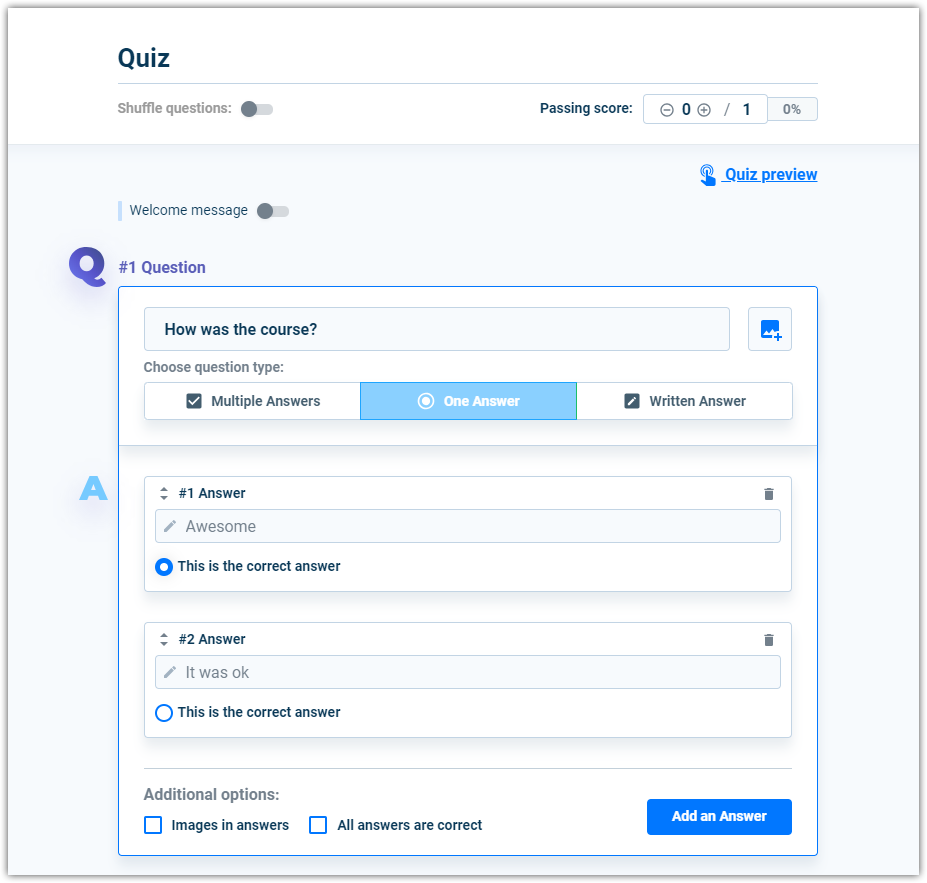Customer Onboarding: Steps, Examples, and Best Practices | AcademyOcean

Highlights:
Why is customer onboarding significant?
Where do you start with customer onboarding?
The customer onboarding process: Steps, best practices, and examples
Customer Onboarding Best Practices
Why is customer onboarding significant?
Customer onboarding holds considerable importance for various reasons:
Creating a Positive Initial Impression: The onboarding process represents a critical opportunity to establish a favorable first impression with new customers. A seamless onboarding experience sets a positive tone for building enduring customer relationships.
Mitigating Customer Attrition: Effective onboarding plays a pivotal role in reducing customer attrition rates, which signifies the pace at which customers discontinue using your product or service. When customers grasp how to effectively utilize your product and recognize its value early on, they are more inclined to remain loyal.
Optimizing Value Realization: Onboarding ensures that customers are well-informed about all the features and functionalities of your product, empowering them to maximize its utility. Customers who possess a profound understanding of your product's capabilities are more likely to become dedicated advocates.
Enhancing Customer Engagement: Onboarding can engage customers by instructing them on how to leverage your product to address their specific needs. Engaged customers are more prone to offering feedback, participating in upselling opportunities, and referring others.
Building Trust: Guiding customers through the onboarding process fosters trust and credibility. Customers feel supported and confident in their choice to use your product.
Where do you start with customer onboarding?
You are finally ready to build that onboarding system for your clients and customers, and you need a place to start. Let's take a look at it in three perspectives.
Long term
Start by looking at the big picture. You already have a running business with marketing, customer support, sales, and/or other departments. Consider how your customer education will fit in with your other activities. Think about what roles your departments will play:
- do you have dedicated customer support?
- will your sales reps be involved in onboarding your new clients?
- who is going to create and keep the content up-to-date?
Write down the broad goals of your onboarding course. Think of what do you want people who finish it to be able to accomplish. This will guide you when it comes to determining the actual contents of the course.
Find out who you are going to enroll. Like in a university, teaching your product to a 35-year-old senior team lead may be quite different from teaching it to a 25-year-old junior who recently got out of college. Ideally, your onboarding course should be good enough for both. But just like in marketing, when you know who you are working with, you can tailor the content to best fit the final goal.
Middle term
Now it's time to look at more details. Determine at what point of your customer journey you'll introduce them to the course. Learning any product takes time. It may not be long, but to master something you need time to learn it. And you want your customers (as well as employees) to know your product well, that's for sure.
You want to introduce your onboarding courses at the time when they are needed and not interfere with other activities. For example, don’t try to explain the features of your product in detail before your customer even has an account to work with.
Set a more precise objectives of your onboarding courses. At this stage, you want to think of what you want to teach first and in what order. Basically, you think up a structure of the course.
After that, you must determine how far you want to stretch it out. In other words, how many lessons you want to include in the course. You might have one lesson per topic, but then some of them may be quite long and will result in learning fatigue, which leads to lack of attention.
Tip: Try keeping your lessons under 10 minutes. AcademyOcean has a Lesson Length feature to help you approximate how long any of your lessons will take to complete.
Consider the delivery method. What tools will you use to teach your customers how to use your product? There’s a lot of options:
- A series of video lessons.
- A series of emails or blog posts.
- You can create an educational e-book and send it outAn offline class is also a viable option.
- Or you can create an online onboarding academy for your clients.
When choosing how you will be teaching your audience, keep in mind several things:
- How many people can you teach at any given time? — If you need to teach dozens of people at a time, offline lessons might not be the best idea.
- How will you keep your educational content updated? — Recording a new video every time you have an update is time-consuming and could be expensive.
- How will you track your learner progress? — You need to make sure people are actually consuming your content and finishing your onboarding course.
Having detailed statistics like the ones AcaademyOcean provides can come in very handy.

Short term
After you have your long-term and mid-term plans laid out, you have to create the content for your onboarding course. Creating lessons will be your short-term tasks.
Since you are trying to educate your customers, clients or even employees, we suggest using the same approach schools use to create their educational programs.
Gather all available information you have in different forms: FAQs, knowledge base, whitepapers, etc. Then structure it according to your objectives in the previous steps. If you have several courses planned out, it's a good idea to outline for each one of them. In education, it's called creating a course syllabus.
A course syllabus will let your learners know what knowledge they will receive after completing it. This will ensure people are learning exactly what they want and do not feel disappointed after the course does not meet the expectations.
Create your lessons and after you are done — launch your onboarding courses.
Oh, and don't forget to quiz your learners. Studies show that reading information and then taking a quiz is much a more effective form of learning.
Forcing your brain to retrieve data ensures that it becomes ‘embedded’ for use in the future. AcademyOcean quiz feature is designed to do just that. You can create quizzes with multiple answers, open answers, even with image answers, or any combination of these.

The customer onboarding process: Steps, best practices, and examples
The typical customer onboarding process entails a series of steps and recommended practices:
1. Sign-up process
- Ensure that the registration process is uncomplicated and user-friendly.
- Gather essential customer data to enable personalization.
- Provide explicit instructions for creating an account.
2. Welcome email
- Dispatch a personalized welcome email promptly following registration.
- Emphasize the primary features and advantages of your product.
- Encourage customers to complete their profiles.
3. First log-in
- Establish a seamless first login experience.
- Offer a brief tutorial or guided tour of your product.
- Address any initial inquiries or apprehensions.
4. Integrations, invitations, and data imports
- Aid customers in integrating your product with other tools.
- Extend invitations to team members or collaborators to join the platform.
- Assist customers in importing their data into your system.
5. Product walkthrough
- Supply a step-by-step product orientation.
- Spotlight essential features and functionalities.
- Provide video tutorials, tooltips, or interactive guides.
6. Follow-up emails
- Dispatch follow-up emails to monitor the customer's progress.
- Propose additional resources or tips based on their usage.
- Solicit feedback and address any concerns.
7. Knowledge Base
- Maintain an extensive knowledge repository or FAQ section.
- Simplify the process for customers to access answers to common queries.
- Include video tutorials, articles, and troubleshooting guides.
8. Routine Check-Ins
- Schedule routine check-ins with customers.
- Offer opportunities for customers to seek assistance or pose questions.
- Collect feedback and assess customer contentment.
9. Mini Celebrations:
Recognize customer milestones and accomplishments.
Transmit congratulatory messages upon the completion of specific tasks.
Encourage ongoing engagement and exploration of the product.
Customer Onboarding Best Practices
1. Understand your customer
- Segment customers based on their unique needs and preferences.
- Tailor the onboarding experience for each customer segment.
2. Set clear expectations
- Clearly communicate what customers can anticipate from your product.
- Provide a well-defined timeline for onboarding milestones.
3. Show value
- Showcase the immediate value your product delivers.
- Illustrate how it addresses specific pain points.
4. Stay in constant communication
- Maintain open channels of communication throughout the onboarding process.
- Be responsive to customer inquiries and concerns.
5. Create customer-centric goals
- Define onboarding objectives from the customer's perspective.
- Concentrate on aiding customers in attaining their desired outcomes.
6. Seek to impress
- Go the extra mile to surpass customer expectations.
- Surprise customers with valuable insights or features.
7. Measure your success
- Employ analytics to track customer advancement during onboarding.
- Continuously refine your onboarding process based on data-driven insights.
This is our take on planning and implementing a customer onboarding system for your company. Let us know how you did or plan on building your onboarding process.
Remember that effective customer onboarding is an ongoing endeavor that adapts and evolves in tandem with changes in your product and customer requirements. It is imperative to adjust and enhance your onboarding strategies to guarantee enduring customer success.
If you are still considering the tool for the job, take a look at how you can use AcademyOcean for customer success and onboarding processes.


